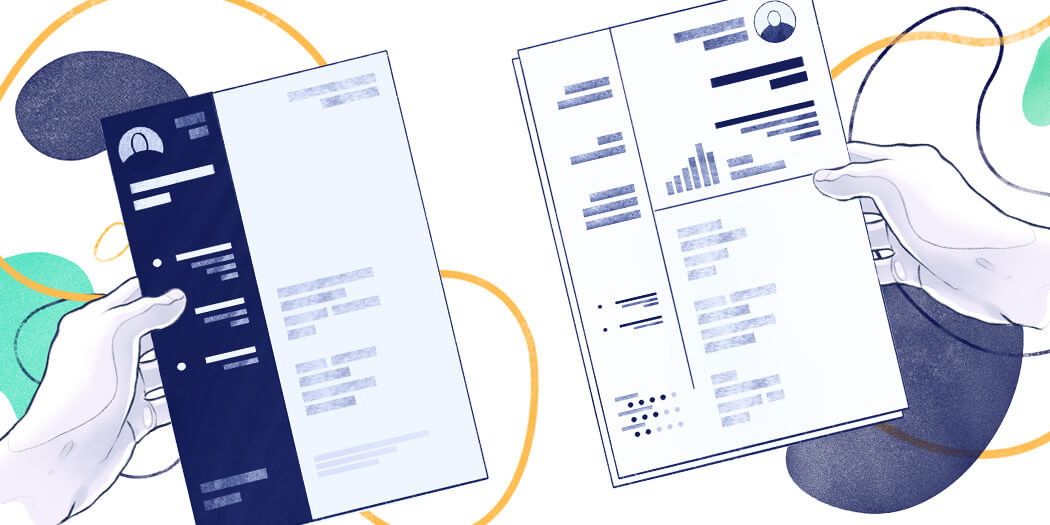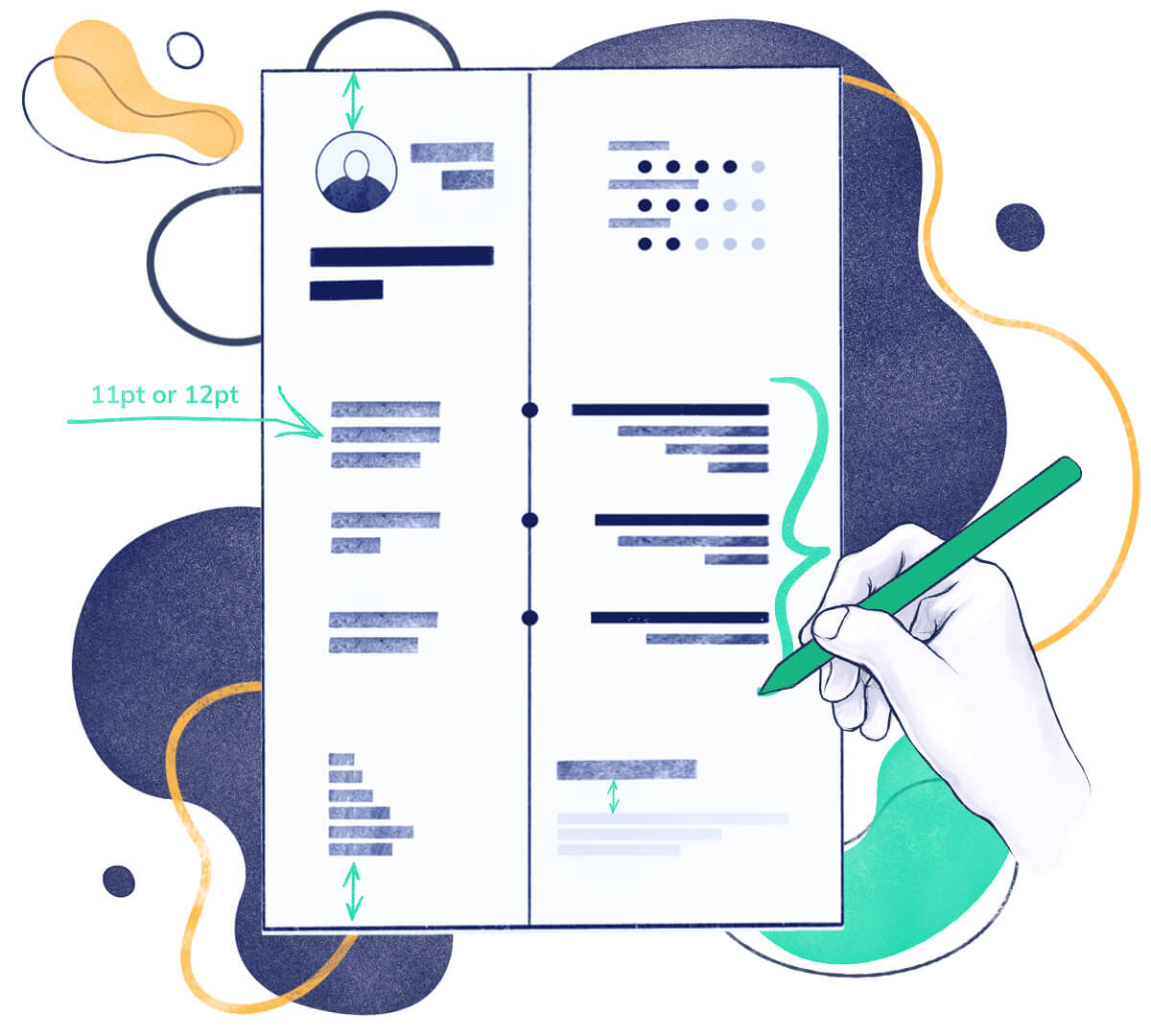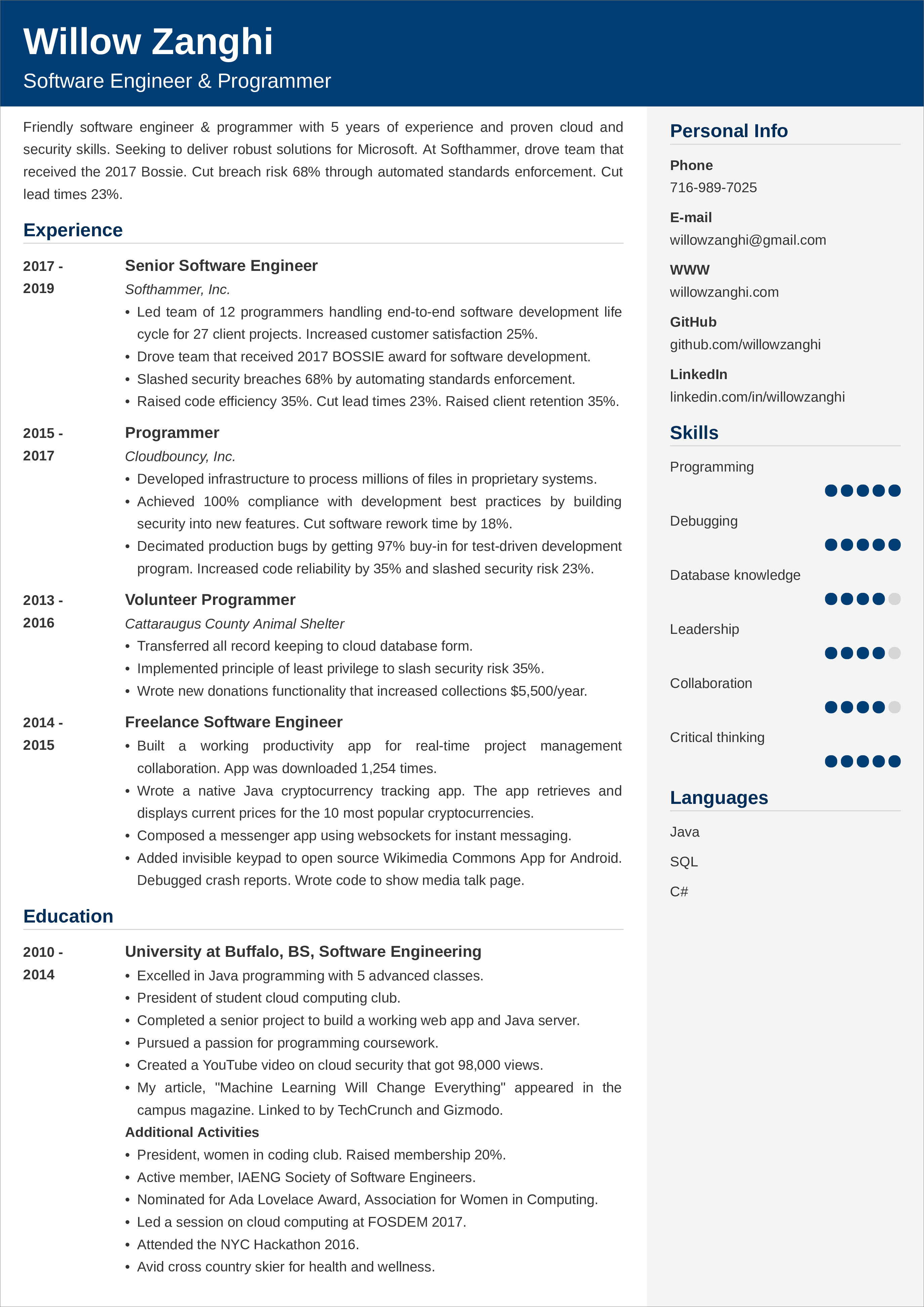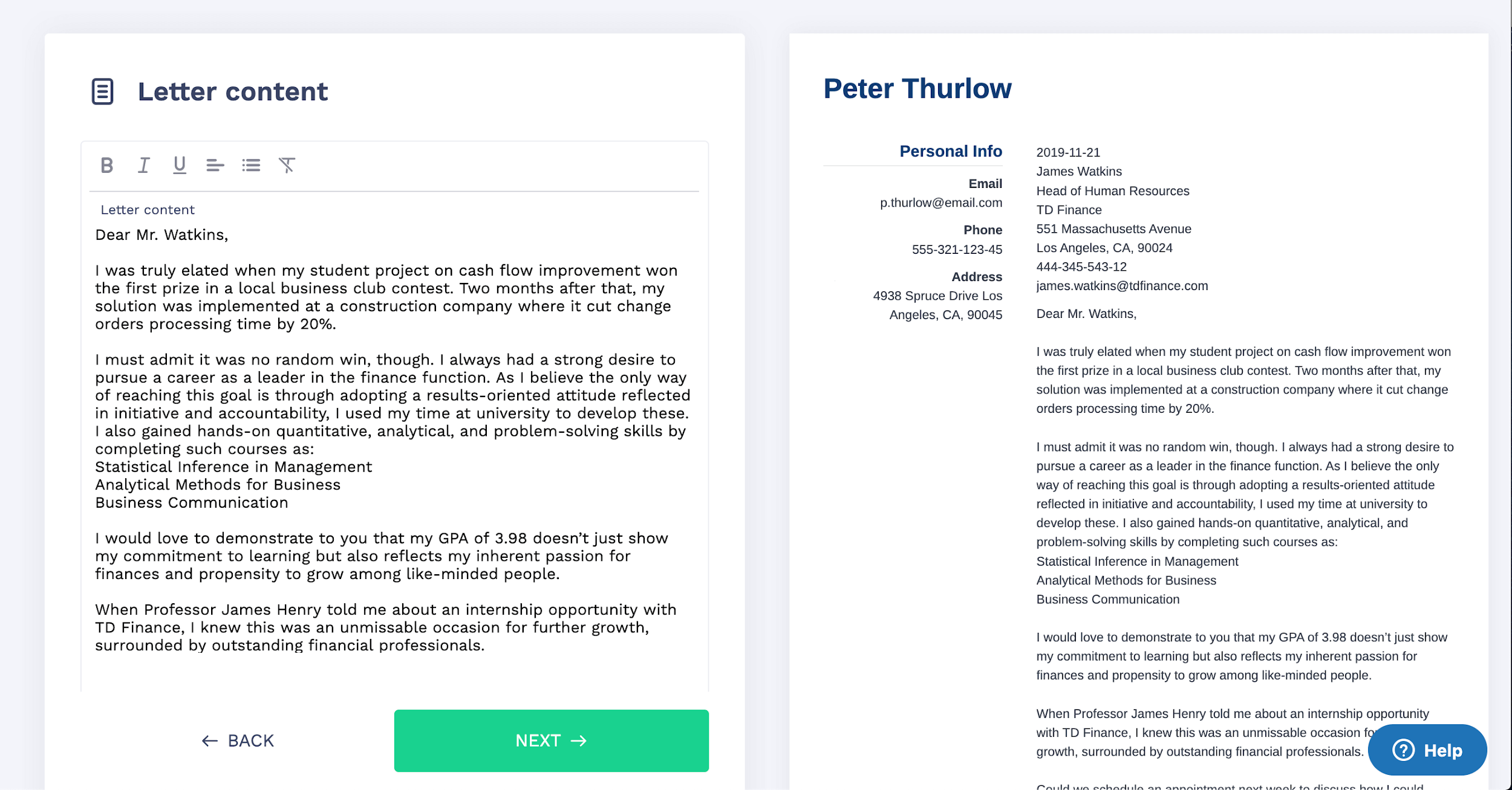
How Long Should a CV Be? One Page CV vs Two Page
How many pages should a CV be? One page CV vs two page CV. Get the answer to how long should a CV be with expert tips to shorten yours.

Tom Gerencer
Career Expert

To get a stab at your dream job, you need to give the hiring manager exactly what she wants. Start with her favourite CV format: a chronological layout. Elegant, classy, and, most importantly, extremely efficient.
In every area of life, trends come and go. But—
There are those all-time classics that are never out of style. Think about the little black dress or the ‘68 Shelby Mustang.
That’s what a chronological CV is for the hiring industry.
The paradigm of job search. The go-to format for nearly every candidate.
Want to know what makes it so special? Not sure how to write a reverse-chronological CV?
In this guide:
Let’s cover the very basics first.
A chronological CV (or actually a reverse-chronological CV) is the most common and universal of the three standard CV styles. Its focal point is the work history section in which you outline up to 15 years of your most recent employment, listing positions in descending chronological order and outlining your key responsibilities.
A chronological CV template consists of the following sections, usually in the below order:
Here’s a reverse-chronological CV example so you can see what it looks like in practise.
Save hours of work and get a cover letter like this. Pick a template, fill it in. Quick and easy. Choose from 21 cover letter templates and download your cover letter now.

What users say about ResumeLab:
I had an interview yesterday and the first thing they said on the phone was: “Wow! I love your CV.”
Patrick
I love the variety of templates. Good job guys, keep up the good work!
Dylan
My previous CV was really weak and I used to spend hours adjusting it in Word. Now, I can introduce any changes within minutes. Absolutely wonderful!
George
Clean, easy-to-skim, with all the crucial data presented on a silver platter.
Like what you see? Explore our collection of 99+ sample CVs for all kinds of jobs to view a CV tailored to your profession.
What makes the reverse-chronological CV format so good?
First of all, it highlights what matters most to recruiters: your work history, with a focus on your most recent employment.
That’s why recruiters prefer this format over the other ones. And your professional future is in their hands, so you better play by their rules.
Secondly, the chronological CV layout is most likely to pass an ATS test. See, nowadays most large companies (98% of Fortune 500) use algorithms and bots to scan CVs before they reach human decision-makers.
Those bots look for keywords such as:
And a reverse-chronological CV makes all of the above prominent and easy to parse.
Feel like you should write a good ol’ classic chronological CV?
You’re probably right! Let’s look into what types of candidates can benefit from writing a chronological CV most.
In other words, virtually everyone.
See, the chronological CV is such a great format mostly because it’s versatile. It doesn’t matter if you’re a rookie or a seasoned pro. What’s more—
You can adjust this CV structure so that it fits your needs. I’ll explain that in detail in the following section.
The two other typical CV formats are:
If you’d like to take a closer look at the two other options, see our dedicated guide comparing a chronological vs functional vs combination CV and make a fully-informed choice.
But (don’t say I didn’t warn you), you’ll most likely end up with a chronological CV format anyway. And it will be for a good reason!
Now, let’s walk through how you can make the most of each section of a chronological CV. Read on for tonnes of examples and actionable tips.
(Plus, as a bonus, at the bottom you’ll get a ready-to-use fill-in-the-blanks rev-chron CV template you’ll be able to adjust in minutes.)
If there’s any downside to the chronological CV setup, it’s that your CV might end up looking too similar to those by other candidates.
The fix?
Add a bit of extra value to each section. It’s not that hard—let me show you how.
Include:
Pretty simple, right?
If you need more detail, read our in-depth guide to creating a standout CV header.
It’s that short-and-sweet paragraph at the top of your CV.
The purpose of a CV profile is to provide an overview of your qualifications and expertise plus present a few highlights of your career.
Got 2+ years’ experience in your field? Your CV profile should be a professional summary that focuses on accomplishments and shows how you’ll translate those into success in your prospective position.
Barely starting out on your career?Put a CV objective statement at the top of your reverse-chronological CV. Showcase skills that you’ve mastered so far and explain how well you’ll fit in.
Whichever one you pick, here’s a universal formula to follow:
These examples show you how a CV profile works in practise.
The first one comes from a senior marketing specialist CV.
See that? Specific information on the candidate’s skill set and solid examples of achievements that back those skills up.
Now, see a sample CV profile that doesn’t quite tick all the boxes.
Not awful, true.
But it doesn’t include anything special other than generic qualifications most candidates for that position will have.
Here comes the key component of every reverse-chronological CV template.
The work history section. It’s the most prominent part of the whole CV. One that makes or breaks your chances.
Here’s how to craft a millennium-falcon-like experience section on a chronological CV:
Alright, let’s see a good and a bad example of presenting your work history in a reverse-chronological CV layout.
Here’s a top-notch work history section sample taken from a CV of a data scientist.
The job to which she’s applying requires skills in machine learning, data mining, and model development optimization.
Senior Data Scientist
ACB Inc.
Los Angeles, CA
May 2013–Sep 2019
Key achievement: Applied data mining to analyse procurement processes resulting in savings of £420,000 a year.
And here’s a less-than-perfect sample from a PR specialist CV.
PR Specialist with Nike Seattle, 2018 - today
Seattle, Washington
Responsible for:
Night and day. The good example fits the job like Spandex. Plus, it lists specific, verifiable achievements. Recruiters would have to be crazy to not call her up for an interview.
The bad example? It lacks details, is vague, and just plain boring.
For most candidates, listing education on their chronological CVs is a sheer formality.
If you have over 2 years of relevant experience in your field, make your education section brief and to-the-point.
Include only:
Like in this example:
BSc in Mathematics; Minor in Italian
The City University of New York, Brooklyn, NY
2014
Recently graduated and don’t have a solid work history to show off yet?
Do two things—
First of all, make your education section the main selling point of your chronological CV. Put it above the work experience.
Secondly, add more details about your educational background: list relevant coursework, honours and awards, extracurricular activities, and other achievements.
You can learn more by reading our guide to perfecting your education section.
The ResumeLab builder is more than looks. Get specific content to boost your chances of getting the job. Add job descriptions, bullet points, and skills. Easy. Improve your CV in our CV builder now.

Nail it all with a splash of colour, choose a clean font, highlight your skills in just a few clicks. You’re the perfect candidate and we’ll prove it. Use the ResumeLab builder now.
Make a skills section that clearly stands out from the rest of your CV. List between 5 and 10 skills relevant to the position you’re targeting.
But—
Don’t just cram your chronological CV with a random set of skills. Go about it this way:
Master the art and science behind putting skills on a CV with our dedicated guide.
Like I said above, the only potential flaw of the chronological CV setup is that it’s just sooo common and almost formulaic.
Sure, you’ve already learned how to max out each standard part of your CV. Time for one extra step—
Create an additional CV section and enter a few of your proudest professional “wins.”
Check out these ideas.
It’s a perfect example of show don’t tell. All of the above will make your key qualifications much more believable.
And voila. Follow the above steps to create a job-winning chronological CV.
Before you start writing your CV, though, I’ve got a bonus for you!
If you’re pressed for time, you feel free to use the handy template below.
Copy it, add your own details, and you’ll have a perfectly-structured chronological CV in minutes.
[Your Name]
[Job Title]
[Phone Number]
[Email Address]
[LinkedIn Profile]
[Dependable/detail-oriented/creative/another adjective that describes you][Your Job Title] with [Number of Years] years of experience in [coordinating projects/inbound marketing/front-end development/another key area of your expertise] seeking to join [Target Company Name] to help boost all of your major KPIs in the upcoming months. In my [current/previous position] with [Company Name][boosted sales/cut costs/improved processes/other relevant achievements] by 30% year-on-year.
[Position]
[Company]
[Dates worked]
[Position]
[Company]
[Dates worked]
[Degree]
[School/University Name]
[Graduation Date]
Technical Skills
Soft Skills
Double your impact with a matching CV and cover letter combo. Use our cover letter builder and make your application documents pop out.

Want to try a different look? There’s 18 more. A single click will give your document a total makeover. Pick a cover letter template here.
Here’s a recap of how to write a chronological CV:
Questions? Concerns? Need further help? I’m here to listen and respond. Drop me a line in the comments and I’ll get back to you double-quick!
At ResumeLab, excellence lies at the heart of our values, underpinning our promise to provide outstanding career resources. Our team of career experts meticulously assesses each article in line with our editorial guidelines, guaranteeing our content's high quality and dependability. We consistently engage in original research, illuminating the nuances of the job market and earning acclaim from various influential news outlets. Our commitment to delivering professional career advice draws millions of readers to our blog annually.

How many pages should a CV be? One page CV vs two page CV. Get the answer to how long should a CV be with expert tips to shorten yours.

Tom Gerencer
Career Expert

Find out how to send a CV by email and what to write in an email when sending a CV. See a sample email for sending a CV and learn how to write one yourself.

Michael Tomaszewski
Certified Professional Resume Writer, Career Expert
![CV Outline: Best Examples and Templates to Use Now [+Tips]](https://cdn-images.resumelab.com/pages/outline_listing_uk.jpg)
With our CV outlines, you can start writing your CV right away. Plus, we’ll show you how to write each section to make the most of it.

Maciej Duszynski
Certified Professional Resume Writer, Career Expert